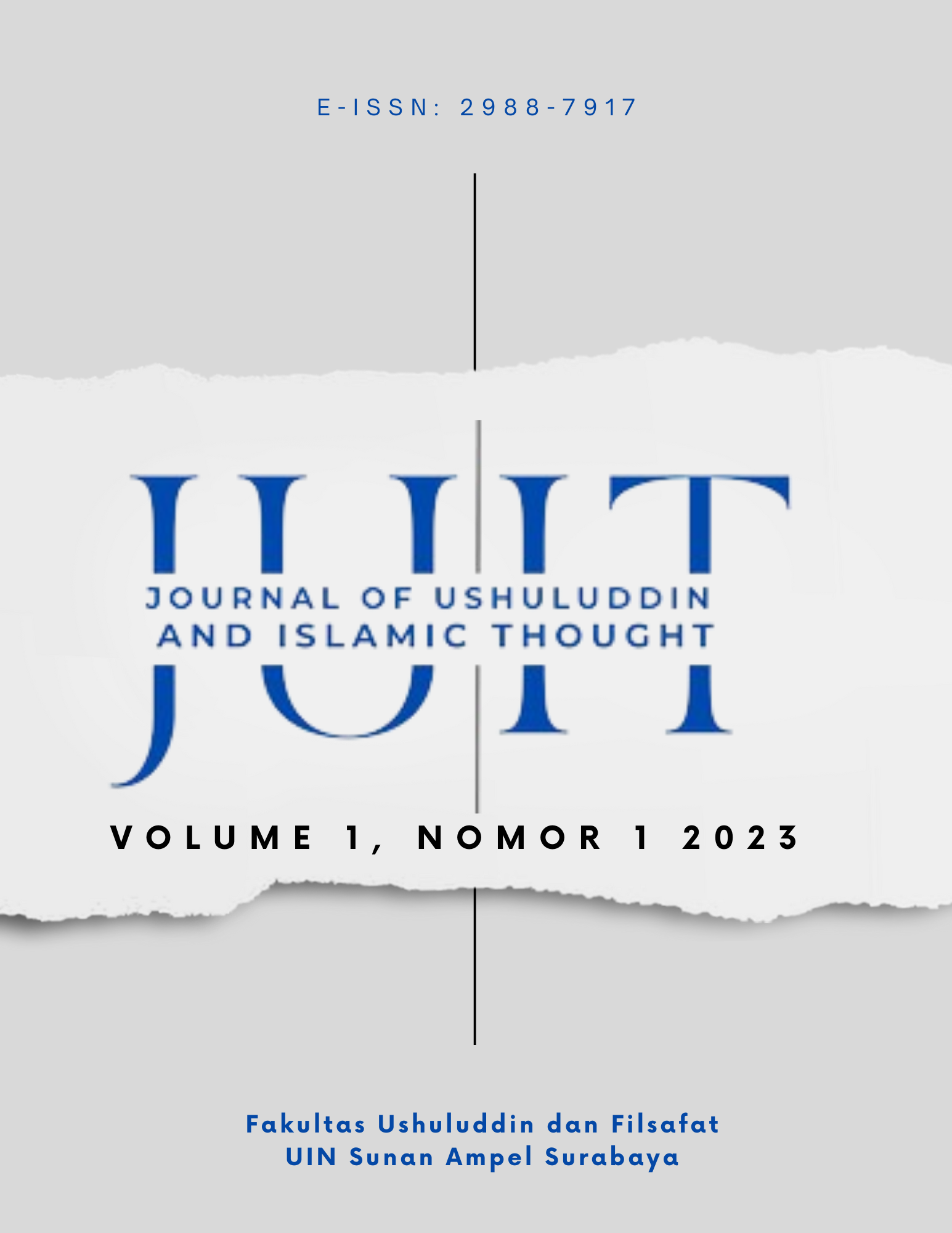Mitos Kecantikan Naomi Wolf dalam Religi: Analisis Hermeneutika Hans-Georg Gadamer
Main Article Content
Abstract
This study delves into Naomi Wolf's conceptualization of beauty as a quasi-religious phenomenon. Utilizing a qualitative research framework inspired by Hans-Georg Gadamer's hermeneutics, the investigation navigates through four critical stages: the effective-history of theory (the historical context of influence), pre-understanding of theory, the fusion of horizons (the merging of perspectives), and the practical application of theory. Primary data is extracted from Wolf's seminal work, "The Beauty Myth," while supplementary insights are gathered from a diverse array of scholarly sources including books, journals, and pertinent literature. The analysis elucidates Wolf's portrayal of beauty as a deity-like construct wherein women are idolized, positioning beauty as a vehicle for societal progression. Moreover, it highlights how beauty rituals induce apprehension in women regarding deviations from idealized standards, emphasizing the imperative of the modern feminist movement's push for body positivity. Ultimately, this research underscores the importance of challenging conventional beauty paradigms and nurturing self-acceptance among women.
Downloads
Article Details

This work is licensed under a Creative Commons Attribution-NonCommercial 4.0 International License.
Licensing
© The Author(s). Published by Faculty of Ushuluddin and Philosophy, Sunan Ampel State Islamic University Surabaya, Indonesia.
This is an Open Access article distributed under the terms of Attribution-NonCommercial 4.0 International (CC BY-NC 4.0).
References
Aprilita, Dini, dan Refti Handini Listyani. “Representasi Kecantikan Perempuan dalam Media Sosial Instagram (Analisis Semiotika Roland Barthes pada Akun @mostbeautyindo, @Bidadarisurga, dan @papuan _ girl)”. Paradigma 4, no. 03 (2016).
Clinic, ZAP. “ZAP Beauty Index 2019”. https://zapclinic.com. Diakses 27 Mei 2023.
Dani, Indriya Rusmana, dan Muthia Estafand. Cantik dengan Sedekah: Solusi Dicintai dan Bahagia bagi Muslimah. Jakarta: QultumMedia, 2010.
Daring, KBBI. “Cantik”. Terakhir diubah Oktober 2023
————. “Agama”. Terakhir diubah Oktober 2023.
ISAPS. “International Society of Aesthetic Plastic Surgery”. https://www.isaps.org/discover/about-isaps/global-statistics/reports-and-press-releases/global-survey-2019-full-report-and-press-releases/. Diakses 27 Mei 2023.
Kasno, Kasno. Filsafat Agama. Surabaya: Alpha, 2018.
Maghfiroh, Devi Laila, dan Moh. Zawawi. “Resistensi Perempuan dalam Film For Sama: Kajian Timur Tengah Perspektif Feminisme Naomi Wolf”. Nusa: Jurnal Ilmu Bahasa dan Sastra 15, no. 4 (2020).
Muayyanah, Fitrotul, Emah Khuzaemah, dan Indrya Mulyaningsih. “Celaan Fisik pada Film Imperfect Karya Ernest Prakasa (Kajian Mitos Kecantikan Naomi Wolf)”. Medan Makna: Jurnal Ilmu Kebahasaan dan Kesastraan 20, no. 1 (2022).
Muhaimin, Abdul Mujib, Jusuf Mudzakir, dan Marno. Kawasan dan Wawasan Studi Isam. Jakarta: Kencana, 2005.
Olivia, Femi. Change Yourself into Swan. Jakarta: Elex Media Komputindo, 2010.
Sandhy, Area. “Pemaknaan Perempuan terhadap Konstruksi Mitos Kecantikan di Media Online Femaledaily.com”. Skripsi, Universitas Diponegoro, Semarang, 2016.
Widyaningrum, Erika Lise. “Konsep Kecantikan Wanita dalam Lukisan I Gusti Ngurah Udiantara”. Universitas Negeri Yogyakarta, Yogyakarta, 2017.
Wolf, Naomi. Mitos Kecantikan: Kala Kecantikan Menindas Perempuan, terj. Alia Swastika. Yogyakarta: Niagara, 2004.

